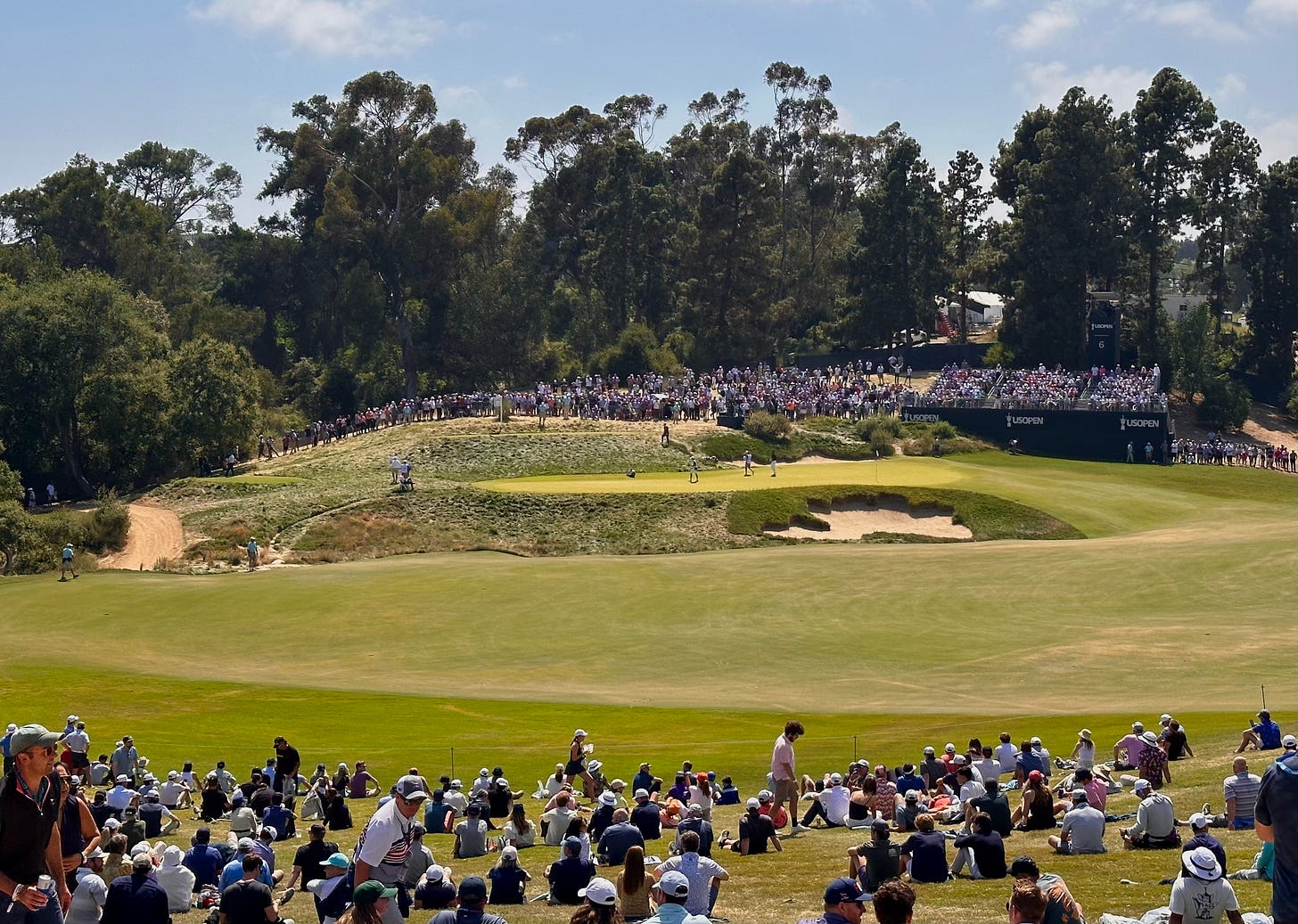Sixth Sense
How did LACC's 6th fare against the world's best? Plus, will it join lists of golf's inspired short par 4's? A post 2023 U.S. Open breakdown of the drivable two-shotter.
No one knew how the little par 4 might play. Or which of its options U.S. Open contestants would embrace. Would it be a bomb-and-gougefest or something more nuanced?
The sixth at Los Angeles Country Club had plenty going for it and just as much working against its 320 yards of potential heading into the 2023 national championship.
On the plus side:
The fairway was ample enough for players to choose a preferred avenue to the green.
The moon-shot to the green was only 275 yards away, with the USGA only slightly narrowing the approach strip into the putting surface.
Light bermuda rough far to the right of the green never grew dense due to soil conditions, possibly creating a vulnerability that would lure an excessive number of players to blast away at the green. (Most realized in practice rounds that recovering from the far right rough would be hard work with the green going away from them.)
The green-fronting tributary of the barranca started the week excessively dense with robust fine fescue rough. Thankfully, foot traffic and practice round hacking reduced this non-water channel to a pesky either-or-proposition. (For those wondering: it was left unmarked by red stakes because and it’s not a waterway and a penalty area distinction could have negatively changed strategy).
Working against the sixth:
An early arrival in the round comes between several tough holes instead of later in the festivities where it might garner more risk-taking and notoriety.
The downhill blind tee shot and semi-blind lay-up option might have garnered excessive apathy for not being obvious enough.
A prime lay-up option required the same length tee shot to offer a better angle to most pins but played the same yardage as the straight shot to the green.
The bentgrass green held shots surprising well despite feeling firm underfoot. The ball’s reaction when hitting the green meant quieter first bounces compared to Riviera’s 10th, it’s neighbor down Sunset Boulevard where the Genesis Invitational’s dormant poa annua is about as receptive as an ice rink.
To be considered among the great drivable fours a hole need options, uncertainty and dramatics fueled by where the little disruptor fits within an 18-hole symphony. The best of these holes also tempt players to occasionally try a shot outside their comfort zone.
While I can’t say how much discomfort the sixth caused, anecdotally there was the surprising sight of certain well known long and most aggressive players laying well back in the fairway as plenty of others still took a crack at the green. That’s pretty fun and not something you see at most of the other great short four’s played in tournament golf.
The best short fours also offer different day-to-day dynamics depending on the hole location and weather. In this regard, L.A. North’s sixth prompted different daily approaches and some variations in scoring. On Saturday, a far left hole location on the slimmest portion of the green made the hole play slightly over par:
Round 1 3.740 avg., ranked 16th
Round 2 3.670 avg., ranked 18th
Round 3 4.030 avg., ranked 11th
Round 4 3.720 avg., ranked 17th
The biggest unknown: would player take the longest route down the fairway re-expanded in 2010 based on old aerial photos. The 275-yard lay-up to get there provides the best angle to most holes, particularly if the greens are firm or if players want to take the fronting trouble out of play. The idea of taking the long way home is a more extreme version of the dynamics found at Riviera’s 10th, Pine Valley’s 12th and the Old Course at St Andrews’ 12th when downwind (where driving past the green has been cited as the play by Jack Nicklaus and Tom Weiskopf).
“[The] best angle to that green is playing past the hole and backwards into that green to some of the hole locations behind the bunkers,” the John Bodenhamer said in the pre-tournament USGA press conference. “Think about that. That is just brilliant.”
The scatter charts below reveal that almost no one tried this option. 🥲 Oh well, we tried here at The Quad in the extensive 6th hole previews (here and here). And for all I know it was simply a matter of 275 or see falling between the typical 3-wood and next club in the bag.
Regardless, word spilled out to spectators that No. 6 would be a place to see interesting golf. Even before round one, the grandstand filled early each day despite sitting in a different zip code than the main spectator entrance.
How did No. 6 play? The overall numbers courtesy of ShotLink:






